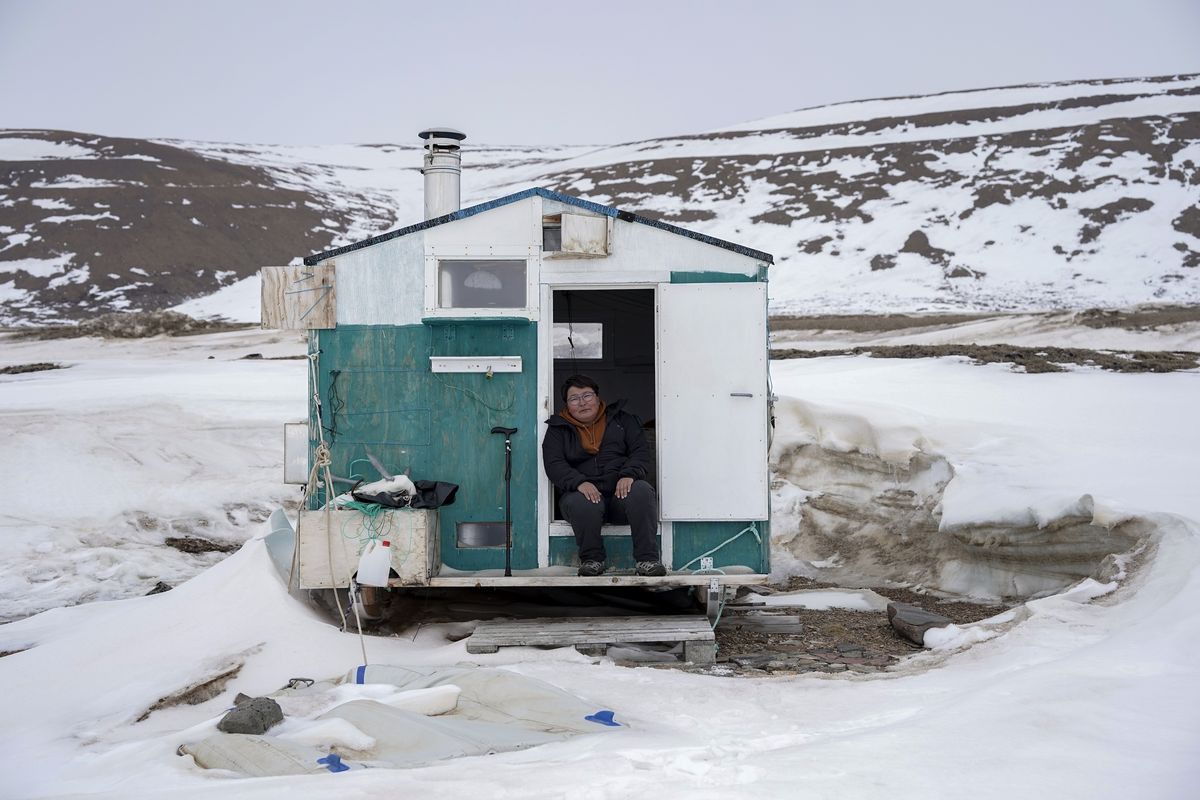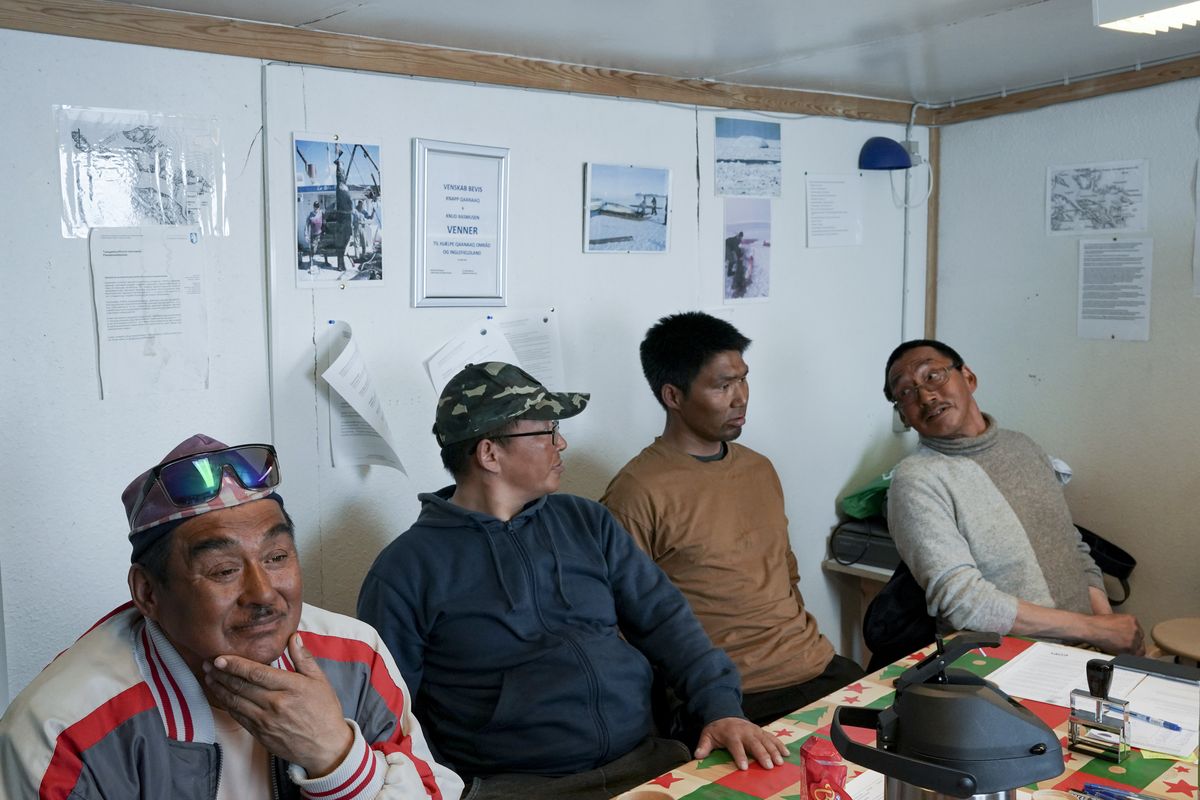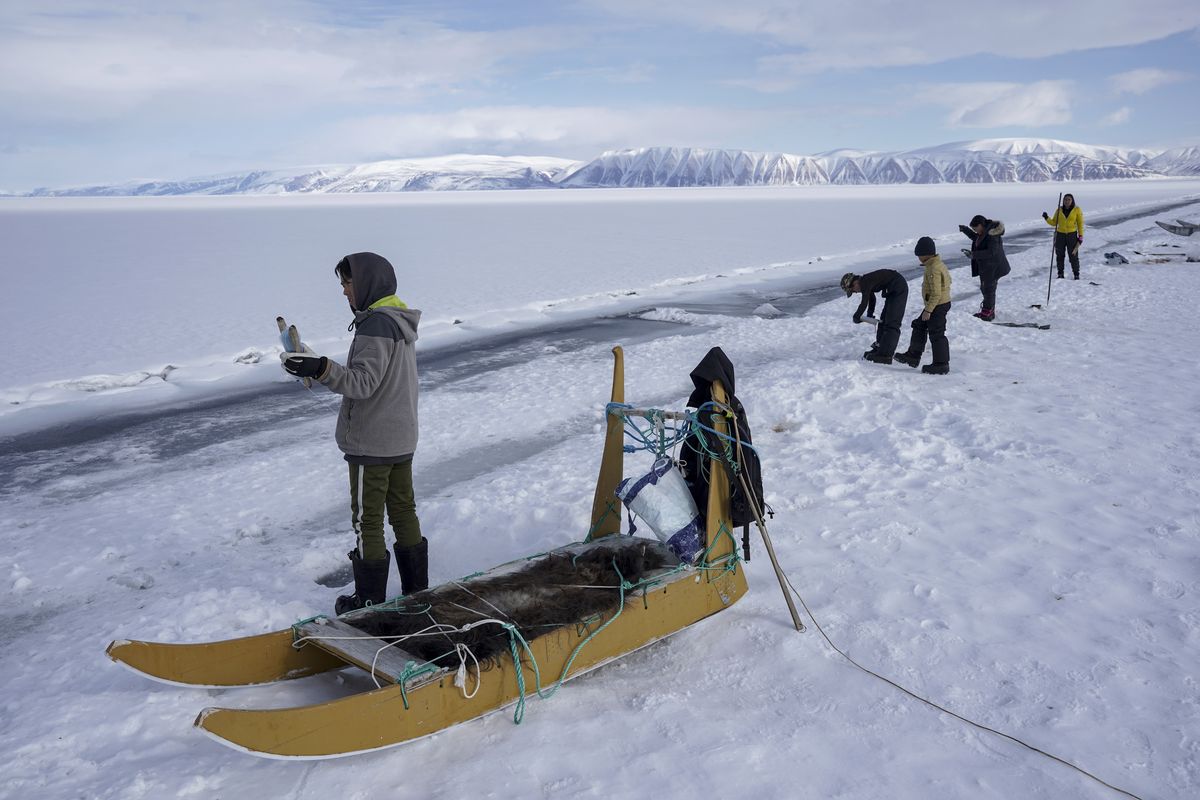The forgotten history of the U.S.’s Cold War presence in Greenland
Villagers fish along a crack in the sea ice in 2023 in Qaanaaq, Greenland. MUST CREDIT: Bonnie Jo Mount/The Washington Post (Bonnie Jo Mount/The Washington Post)
The villagers of Uummannaq were given just four days to leave their homes.
It was the spring of 1953, the Cold War was nearing its peak and the United States had set its sights on this remote Greenlandic settlement more than 700 miles north of the Arctic Circle. The broad plain at the edge of the ice sheet was viewed as the ideal spot for an expanded Air Force base to defend against Soviet missiles. But the 116 civilians living nearby would have to go.
At the behest of the Danish government, which then ruled Greenland as a colony, the villagers hastily packed their belongings and bade farewell to the land where their ancestors were buried. They traveled by dog sled to a rocky peninsula 80 miles north, where they spent months living in tents while waiting for a new town, called Qaanaaq, to be built.
“The people who remember it, they have something bad inside them,” Toku Oshima, a community leader in Qaanaaq, told Washington Post journalists who visited the town in 2023. “They still hurt.”
The forced relocation is one of the lasting legacies of the U.S.’s Cold War involvement in the Arctic country – a legacy that has new resonance as Vice President JD Vance visits the base constructed where Uummannaq once stood.
“There are two narratives that have coexisted in Greenlandic political discourse for a long time,” said Ulrik Pram Gad, a senior researcher at the Danish Institute for International Studies who has previously worked in foreign affairs for the Greenlandic and Danish governments. “On the one hand, the U.S. is a potential opening to the world. But it is also an encroachment on our sovereignty and our land.”
Over the course of the Cold War, the United States constructed more than a dozen military installations in Greenland. Many were ultimately abandoned, but others became a foundation for the country’s infrastructure as it gained autonomy from Denmark. An old air base on Kangerlussuaq Fjord was Greenland’s biggest airport until an expanded runway in the capital, Nuuk, opened late last year.
Before President Donald Trump began talking about acquiring the island territory, many of Greenland’s 56,000 citizens hoped that stronger ties to the U.S. would bring opportunities for tourism and investment, Gad said. But he said the president’s comments and Vance’s visit have evoked more negative memories of past U.S. involvement.
“The general mood is the switch back to, ‘Okay, you’re a threat to us,’ ” Gad said.
Vance’s press secretary, Taylor Van Kirk, said that past U.S. leaders and current Danish authorities have neglected Greenland’s security.
“The security of Greenland is critical in ensuring the security of the rest of the world, and the Vice President looks forward to learning more about the island,” Van Kirk wrote in a statement.
After it was completed in 1953, Thule Air Base – now called Pituffik Space Base – became the site of some of the U.S.’s most secretive and strange Arctic operations. It was the staging ground for “Project Iceworm,” an ill-fated effort to construct a weapons facility inside the ice sheet. It was also the destination of a B-52 bomber that crashed into sea ice, releasing radioactive material into Baffin Bay.
Because Denmark officially barred nuclear weapons from its territory, these operations were conducted without the full knowledge of Danish authorities or Greenlandic civilians. Their potential ramifications for surrounding communities have become clear only decades later, as the programs were declassified.
Surveys of the seafloor at the site of the bomber crash uncovered plutonium contamination in bottom-dwelling creatures, such as shellfish. A 2016 study of the material left behind by “Project Iceworm” warned abandoned fuel and other toxic material could be released into Greenland’s waterways as the ice sheet melts amid escalating climate change.
Today, Pituffik plays a key role in space surveillance and missile defense; about 150 personnel are stationed there full time.
“Strategically, Pituffik Space Base’s geographic location is vital to international security initiatives operated by the U.S. Space Force and its mission partners,” a Space Force spokesperson said in a statement.
In 2023, the installation in northwest Greenland was transferred to the Space Force and renamed Pituffik, after the Inuguit term for the area. The change was meant to pay homage to the Greenlandic people who once lived there, officials said at the time.
Yet some Qaanaaq residents said they still feel the sting of exile. Though their ancestral village was returned to the Greenlandic government in 2002, most of the structures were burned, and villagers are barred from moving back. They are also prevented from accessing their old hunting grounds, said Adolf Simigaq, vice president of the local hunters union, adding that they were far richer than where they live now.
“Before they were moved, we lived where the animals were,” said Simigaq, whose parents were among those forced out of Uummannaq. “Today, I am only here because of the American base.”
Qaanaaq residents began seeking restitution within a few years of the relocation, but it wasn’t until early 2000s that the Danish government apologized for what happened. The community ultimately received 500,000 kroner (equal to about $100,000 in today’s dollars) from Denmark, and Greenland’s Home Rule government was added to the 1951 defense agreement that authorized the U.S. presence at Pituffik.


